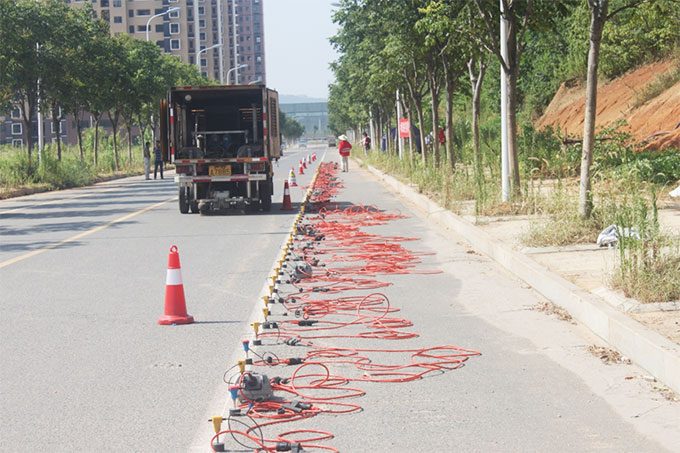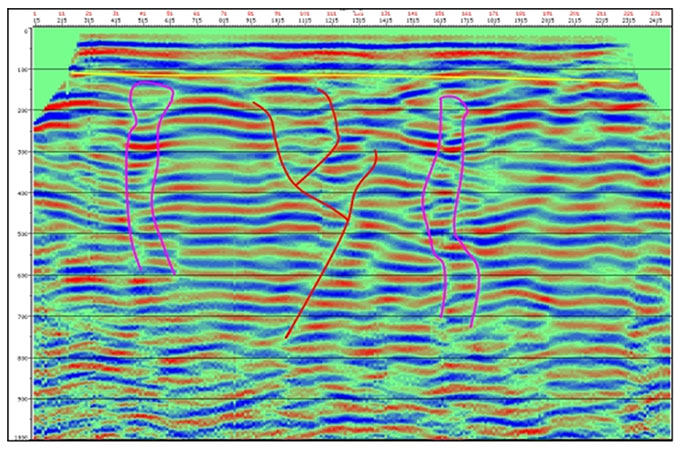【Karst exploration】Karst exploration in Wuhan
Operation time: July 2017
Location: Baoshan Village, Wuhan City, Hubei Province
Weather conditions: sunny, 40 ℃
Operation parameters: intermediate point excitation, 2 M channel spacing, 4 m gun spacing, 48 receiving channels, 12 coverage
Source: Beijing Olympic S-wave vibrator, output 1.5T, sweep frequency 8-80hz, sweep length 11S
GS201 high precision land seismic acquisition system
Operation site:

Diagram of vibroseis excitation
Data processing:
It can be seen from the original single shot record that the S-wave reflection wave has high signal-to-noise ratio, rich reflection layers and exploration depth up to 700ms.
The following figure shows the stack time profile obtained by processing. It can be seen from the figure that S-wave reflection wave is relatively developed with high signal-to-noise ratio and obvious geological phenomena.
The bedrock surface is between 120ms and 150ms (about 25m in depth). There is a horizontal layered reflection interface in the soil layer above the bedrock surface, which is the reflection wave formed by sand and clay. There are also abundant reflected waves in the limestone under the bedrock surface, which are in horizontal shape as a whole and undulate locally. Karst and small faults are developed locally in bedrock. Among them, the karst cave with a total diameter of about 15m is developed near the pile No. 515 and the depth is 30m, and the karst cave with the total diameter of about 10m is developed near the pile No. 1700 and the depth is 35m. Three small buried faults are developed in the middle.

1-line stack time profile
